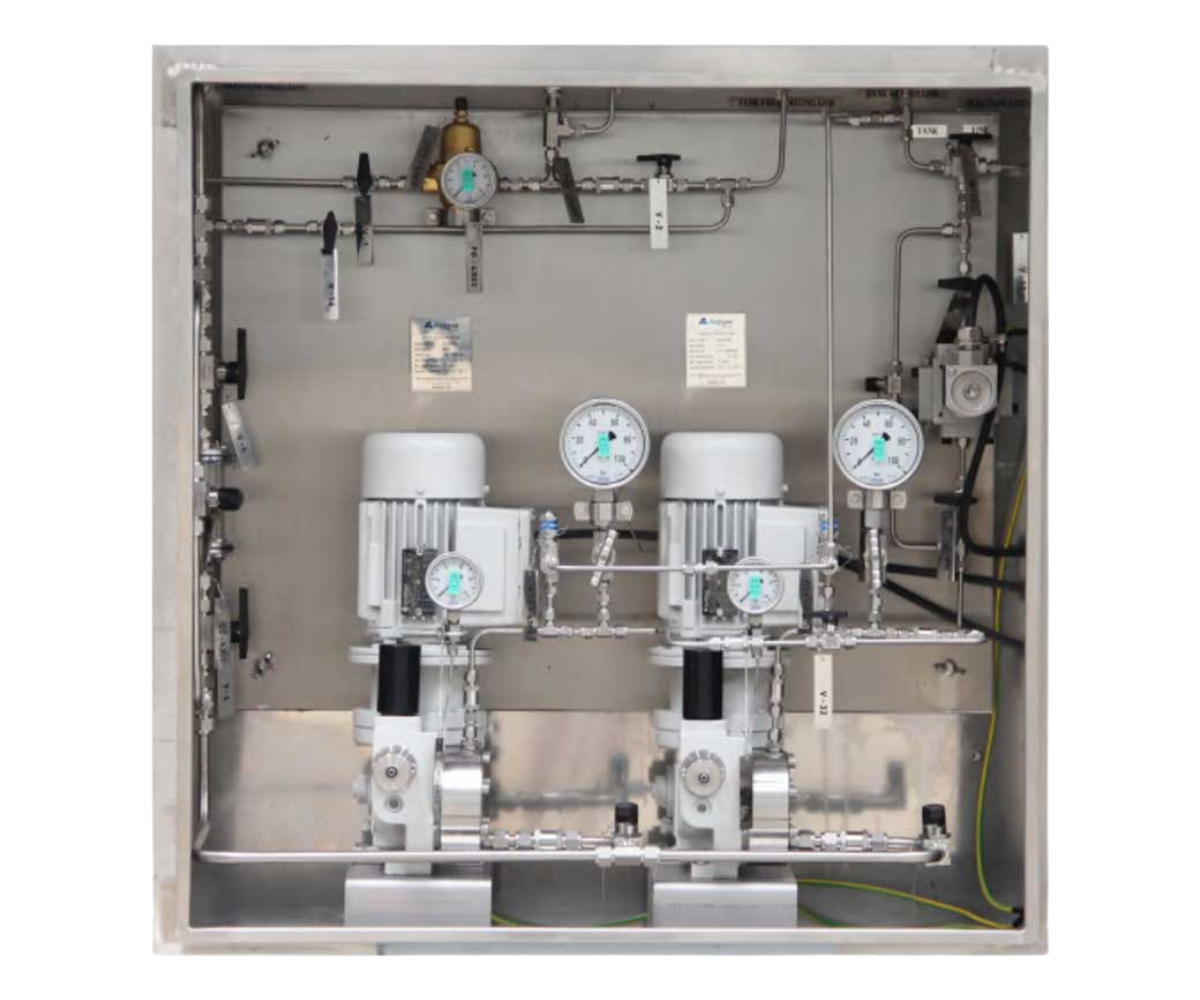Natural Gas Odorizing System
NG
Natural gas, in its raw state, is odorless. This poses a significant safety risk, as leaks would be undetectable without a warning mechanism. To address this, natural gas is intentionally odorized before being distributed to consumers. This allows people to readily detect even small leaks, preventing potential hazards like explosions or asphyxiation. The odorizer unit is the critical piece of equipment responsible for adding the distinctive smell to natural gas.
Daggaz NG Odorizers are designed to satisfy different needs of gas distribution companies. Wide range of gas flow rate and extreme seasonal gas consumption fluctuations easily handled by our odorizing systems. Flowmeter (or verometer) feedback is used to limit odorant injection in addition to mechanical screw allow operators make stroke adjustments easily. All of our odorizers spread over a single network working on RMS A, B or C which can be integrated with each other and odor measurements systems for the sake of homogeneous odorant concentration and reduce odorant consumption.
Description
- By designing customized systems for our customers' needs, we provide perfect solutions for all requirements
- Solar powered systems
- Compatibility with different chemical species
- Compatibility with wide flow range
- Easy operation and easy maintenance
- Simplified pump design
- Pump options to API 675 standards.
- Ability to integrate another pump into the system if requested
- Automatic and manual operation options according to flow information or default (fixed) flow
- Instant feedback and warnings that detect system errors and failures
- Optional D Class control panel
- ATEX, EAC, CE approval|
- Electric pump design as per API 675
- Automatic control system
- immediate feedback and alarms during system errors and faults.
- Separate ATEX certificate for whole pump cabinet
- CE marked NG Odorizing System
- d class exproof controller cabinet or non exproof controller cabinet
- Production according to Shell DEP standards
IN-HOUSE PRODUCTS
Daggaz NG Odorizing Systems Component Origin List
|
1. Fittings and Valves: |
HAM-LET or /and PARKER or/and ASTEC http://www.ham-let.com http://www.parker.com http://www.astecflow.com |
|
2. Regulator: |
Fisher, Emerson USA / Taylor USA http://www2.emersonprocess.com https://taylorvalve.com/ |
|
3. Pipes: |
Borsen, Turkey (Ham-Let Distributor) http://www.borsenboru.com/en/ |
|
4. Solenoid Valves: |
Asco (Emerson) www.asco-process-scope.com II 2 G/D Ex mb II TS. T3 / Ex mD 21, IP67 |
|
5. Calibration Column |
Daggaz, Turkey www.daggaz.com |
|
6. Pump Cabinet |
Daggaz, Turkey www.daggaz.com |
|
7. Pneumatic Pumps |
Daggaz, Turkey www.daggaz.com |
|
8. PC- HMI |
Siemens, Germany www.siemens.com |
|
9. Exproof Controller Cabinet |
Bireks, Turkey or Dunya, Turkey or Asilsan, Turkey www.euroex.com or www.dunyaex.com |
|
10. Verometer (with ex-proof level transmitter from Dinel, Czech Republic) |
Daggaz, Turkey www.daggaz.com |
TECHNICAL DATA
| System Type | Tank Size, Max. [I] | Gas Flow, Max. [Nm3/h] | Gas Pressure, Max. [bar] with pump | Voltage [V] | Ex Zone 1 | Control System | Container | ||||
| - | - | - |
|
- | - | - | - |
APPLICATION-
1. Transmission Pipelines:
Application: Odorization often starts at major hubs in the transmission pipeline network. Large volumes of natural gas are transported over long distances in these high-pressure pipelines. Odorizing the gas at these points ensures that it's detectable as it moves towards distribution networks.
2. Distribution Networks:
Application: Local distribution companies (LDCs) are responsible for delivering natural gas to homes and businesses. They often have odorization units at various points in their distribution networks, especially as the gas pressure is reduced for delivery to consumers.
3. City Gate Stations:
Application: City gate stations are where natural gas is transferred from transmission pipelines to local distribution networks. Odorization is often performed at these stations to ensure that the gas entering the distribution network is properly odorized.
4. Industrial and Commercial Customers:
Application: Some large industrial and commercial customers might have their own odorization units, especially if they receive natural gas directly from transmission pipelines or if they have extensive on-site gas piping systems.
5. Underground Natural Gas Storage Facilities:
Application: Natural gas is often stored underground in large quantities to meet peak demand. Odorization might be performed when the gas is withdrawn from storage and injected back into the pipeline system. The odorization system will be chosen based on the flow rates and the specific requirements of the storage facility.

